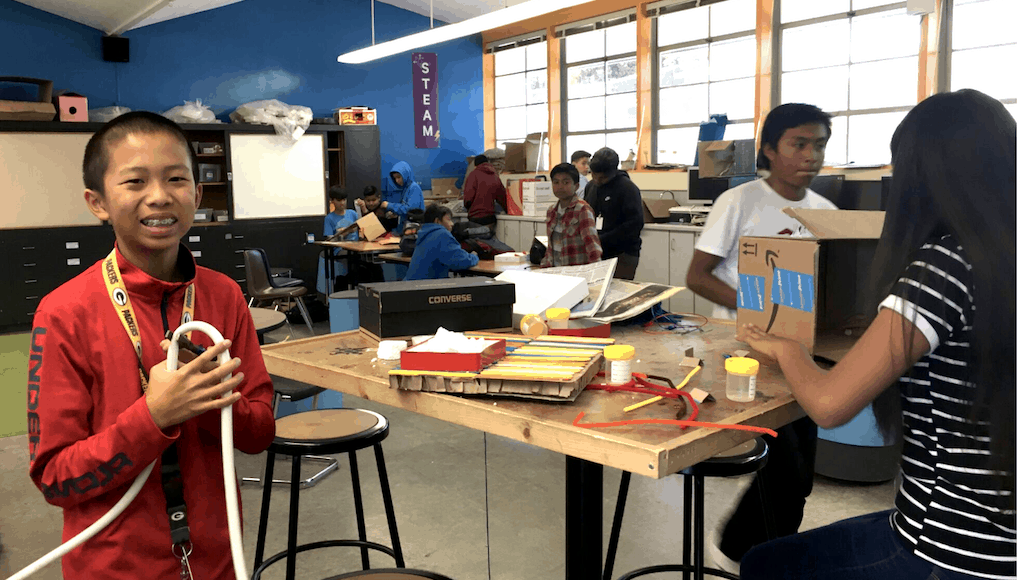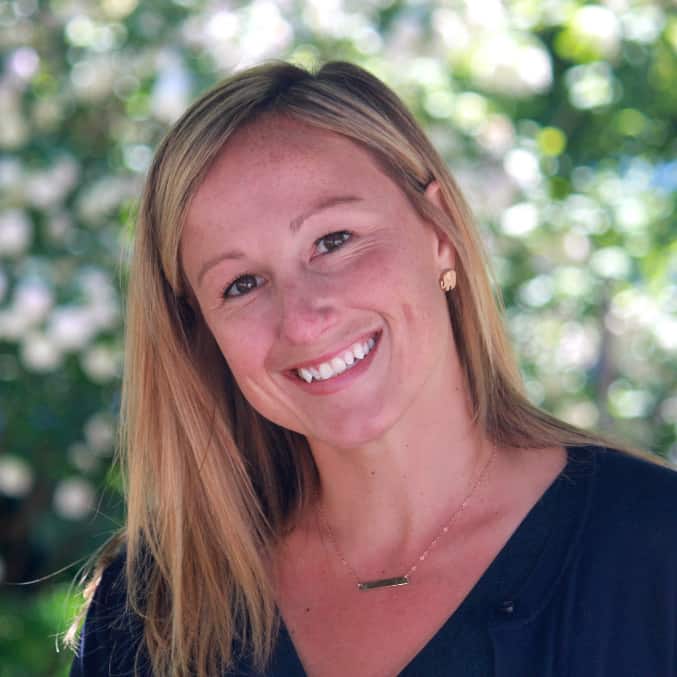Rethinking Middle School with Design Thinking at Vista Innovation & Design Academy

Do you remember your middle school experience? That couple of years that delivered a collision of increased academic rigor and awkward social experiences that would later present themselves in bigger life events. While some may choose to blur this time of transition, blocking out some of the struggles of growth, students of Vista Innovation and Design Academy (VIDA), will celebrate the life momentum captured, learning achieved and relationships formed.
VIDA is a 6-8 Magnet school in the Vista Unified School District that is proving high-quality teaching & learning centered around design thinking can happen anywhere if you have collaboration, community and committed leadership.
The VIDA story began three years ago with Principal Dr. Eric Chagala and a group of dedicated staff with a shared vision, evidenced by their longevity of service and commitment, and with a foundation established through their collaborative decision to make a meaningful change and rethink middle school teaching & learning.

With commitment to the families that they were excited to serve, they knew the surrounding community needed more than another school focused on compliance and conformity. They were eager to maximize student strengths and amplify the stories that needed to be told, but the traditional learner experience wasn’t tapping into the incredible amount of student potential. As Eric would say, “Schools have souls, and those souls need to be nurtured”, and at VIDA … nurture they have.
Three VIDA takeaways:
On my visit to VIDA, I noticed three really important takeaways that make this learning environment unique.
Purposeful design thinking. The school decided to embrace design thinking as one of the core elements of the school. Design thinking as an approach in schools is becoming increasingly popular. What was so notable though about the implementation at VIDA was the emphasis on empathy.
Watch Eric describe the VIDA Design Thinking process:

Eric knew every student’s name and genuinely cared about how they were doing. The problems students were solving and projects they were working on all had some tie to social impact or a great cause. Teachers shared personal stories of students that were moved to tears at times from the projects that they were working on.
There are business partnerships at VIDA; Qualcomm and Verizon have supported some of their efforts to bring tech to the school (see images below of the parent center and the Qualcomm Thinkabit Lab), but the work was not driven by the goals of the businesses. Teachers were at the helm alongside their students, articulating what problems they wanted to solve. There also was an obvious fluidity and flexibility in their approach.

 Staff stick-with-it-ness. When Eric came to the school, which was originally named Washington Middle School, he was intentional about making real transformational change and to do so with the existing staff. All too often, there is a mass-exodus of staff and selective hiring when a school seeks to pursue innovation, but that is not the case at VIDA. Teachers at VIDA have embraced design thinking, regardless of their backgrounds in design or science. It was clear that each teacher has been supported in their own personal learning and pathways to embracing this way of teaching and learning. In every classroom I visited teachers were inviting and eager to share more about their own learning process.
Staff stick-with-it-ness. When Eric came to the school, which was originally named Washington Middle School, he was intentional about making real transformational change and to do so with the existing staff. All too often, there is a mass-exodus of staff and selective hiring when a school seeks to pursue innovation, but that is not the case at VIDA. Teachers at VIDA have embraced design thinking, regardless of their backgrounds in design or science. It was clear that each teacher has been supported in their own personal learning and pathways to embracing this way of teaching and learning. In every classroom I visited teachers were inviting and eager to share more about their own learning process.
Staff own much of the leadership at the school, alongside Eric and AP Michele Ward. Take David Ruiz, an 8th grade English teacher I met while visiting VIDA. In addition to teaching ELA, he teaches a course called Curiosity Hacked, where students use design tools to create projects and products. He also runs teacher seminars and is a digital learning coach.

Happy and eager students. Students I visited while at VIDA were addressing a variety of different problems, but all were engaged and happily working. Students were collaborating in and outside of classrooms, and clearly had agency in their own educational programs. Eric said students have been so eager to deepen their learning and take their work even further that they now are trying to provide them work experiences while at VIDA. These type of activities (work-based learning, internships, etc.) are traditionally embedded in high school experiences, but not as often at the middle school level. They partnered with the Talent Cities program, “which enlists businesses to help connect students’ interests with potential career choices” to provide VIDA students meaningful experiences in the field.

For more on VIDA, watch Eric provide an overview of the school and be sure to follow their work on Twitter at @VIDASHARKS.
For more, see:
- Getting Smart Podcast | Design Thinking as Pedagogy For Students and Educators
- Design Thinking for Personalized Learning: 5 Strategies for Effective Whole School Design
Stay in-the-know with all things EdTech and innovations in learning by signing up to receive the weekly Smart Update.





0 Comments
Leave a Comment
Your email address will not be published. All fields are required.